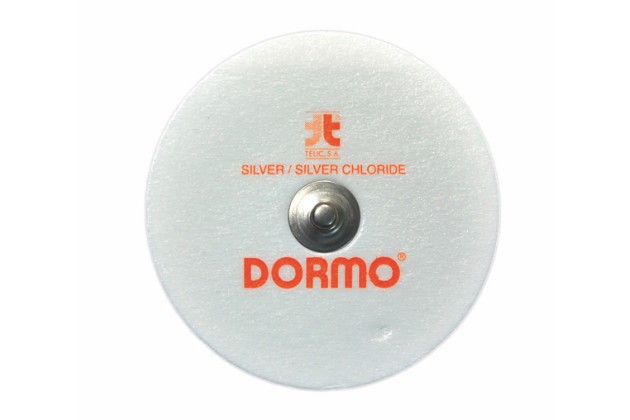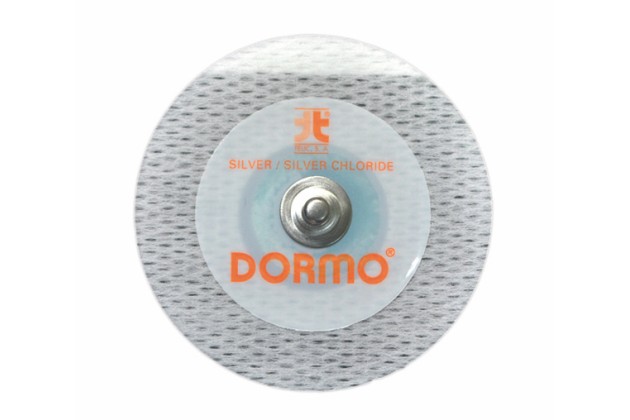ECG Electrodes


ECG Electrodes with Stud Fitting
ECG Electrodes with a stud fitting and a choice of foam backing, clear backing, tape backing or textile backing. Manufactured in Spain to record the heart's electrical activity through repeated cardiac cycles. The Dormo® ECG electrodes Ag/AgCl consist of an electrode family designed to detect and amplify the small electric pulses on the skin produced by the heart muscle depolarisation during each heartbeat.
- Keep protected from direct sunlight / the outside.
- Keep in a dry place.
- Temperature limitation: 5-40ºC.
- Single-use product. Disposable.
- Latex-free
- Safety electrical requirements are met.
Instructions for Use
- Open the pouch along the indicated line.
- Determine the positioning points.
- Remove any excess hair and calluses and ensure that the skin is clear of any oils, creams, fluids, dirt or other impediments to good electrical contact.
- If necessary, clean the skin with appropriate preparation material. Always ensure the positioning point is dry prior to placement of the electrodes.
- Connect the lead wires to the electrodes and peel the plastic cover.
- Place the electrodes on the skin. Smooth the backing surface with the fingers as necessary.
- Turn the unit on and carry out the ECG procedure.
- After the check, lift the tab to gently remove the electrode from the skin.
- Remove any gel residue with a paper towel or water.
About ECG Electrodes
ECG electrodes are used in electrocardiography, a non-invasive medical procedure for recording the electrical activity of the heart. These electrodes are attached to the patient's skin to detect and transmit electrical signals from the heart to an ECG machine, enabling healthcare professionals to diagnose and monitor various cardiac conditions. ECG electrodes allow medical professionals to assess cardiac function, diagnose arrhythmias, and monitor patients during and after surgery or medical interventions. They play a pivotal role in improving the accuracy of cardiovascular diagnoses and the overall management of heart-related conditions.
ECG electrodes come in various shapes and sizes, to accommodate different monitoring needs and patient comfort. Disposable electrodes are commonly used to minimise the risk of cross-contamination between patients. The proper placement and secure attachment of ECG electrodes on the patient's chest, limbs, or other specific areas are essential for obtaining accurate and reliable electrocardiographic readings. Electrodes are connected to leads that transmit the electrical signals to the ECG machine, where they are processed and displayed as a graphical representation of the heart's activity, known as an electrocardiogram.
